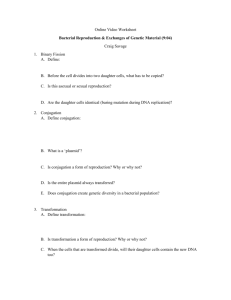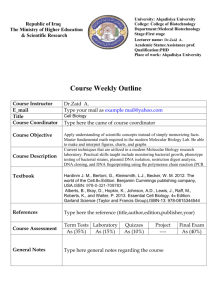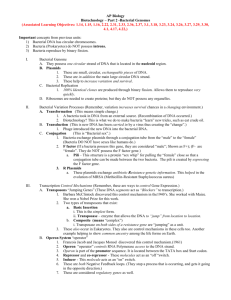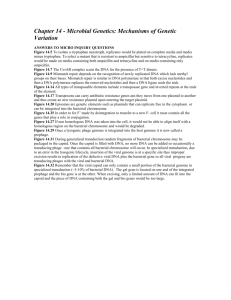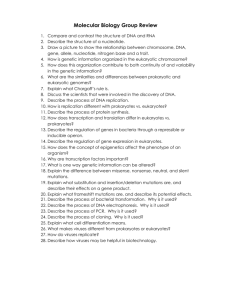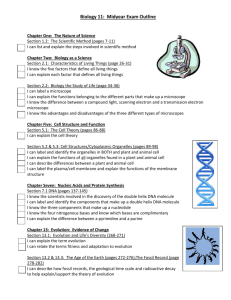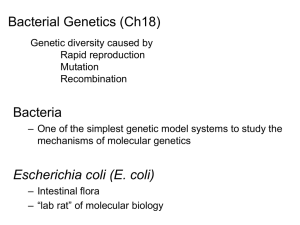KEY
advertisement
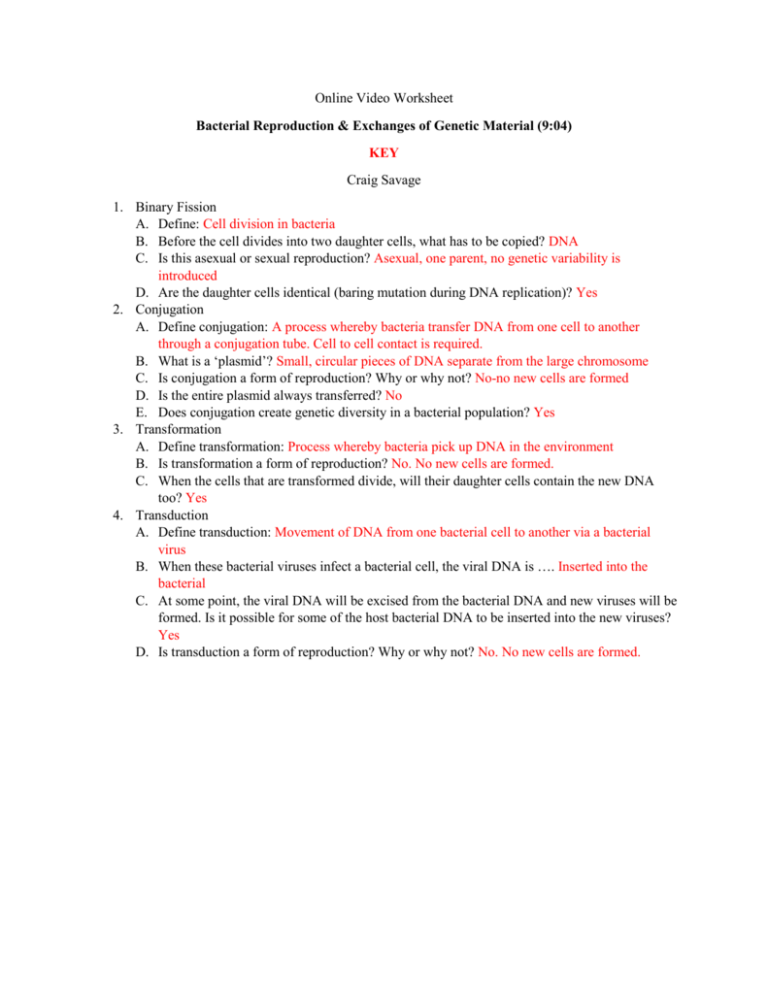
Online Video Worksheet Bacterial Reproduction & Exchanges of Genetic Material (9:04) KEY Craig Savage 1. Binary Fission A. Define: Cell division in bacteria B. Before the cell divides into two daughter cells, what has to be copied? DNA C. Is this asexual or sexual reproduction? Asexual, one parent, no genetic variability is introduced D. Are the daughter cells identical (baring mutation during DNA replication)? Yes 2. Conjugation A. Define conjugation: A process whereby bacteria transfer DNA from one cell to another through a conjugation tube. Cell to cell contact is required. B. What is a ‘plasmid’? Small, circular pieces of DNA separate from the large chromosome C. Is conjugation a form of reproduction? Why or why not? No-no new cells are formed D. Is the entire plasmid always transferred? No E. Does conjugation create genetic diversity in a bacterial population? Yes 3. Transformation A. Define transformation: Process whereby bacteria pick up DNA in the environment B. Is transformation a form of reproduction? No. No new cells are formed. C. When the cells that are transformed divide, will their daughter cells contain the new DNA too? Yes 4. Transduction A. Define transduction: Movement of DNA from one bacterial cell to another via a bacterial virus B. When these bacterial viruses infect a bacterial cell, the viral DNA is …. Inserted into the bacterial C. At some point, the viral DNA will be excised from the bacterial DNA and new viruses will be formed. Is it possible for some of the host bacterial DNA to be inserted into the new viruses? Yes D. Is transduction a form of reproduction? Why or why not? No. No new cells are formed.
